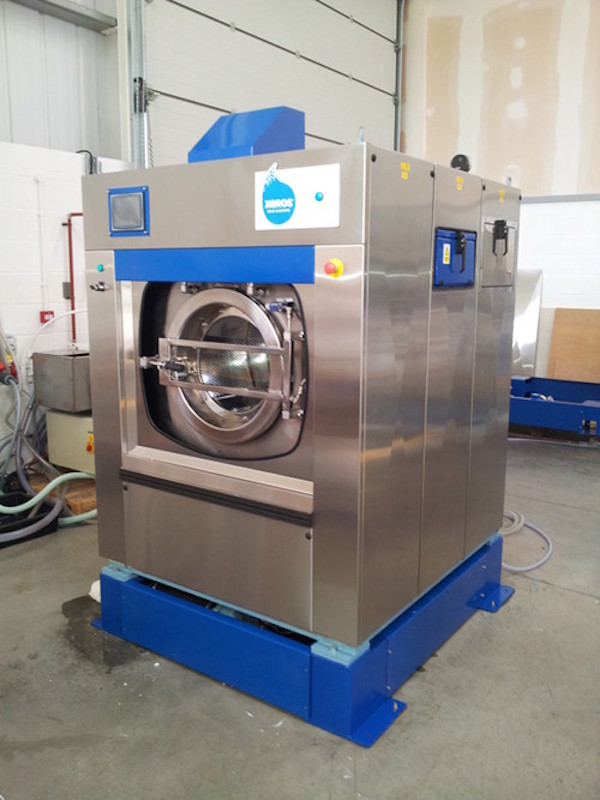
One of the biggest drains on freshwater resources is the household washing machine. As reported by the EPA, a washing machine uses about 41 gallons of water per load on average, while a typical US family uses the washing machine once per day. The UK-based company Xeros has come up with a washing technology that uses 70% less water per washing cycle. This technology also uses a special “bead cleaning” method that is environmentally friendly and apparently cleans dirty clothes even better than regular soap.
The Xeros washing machine looks just like a regular front-loading washer. The main difference from the standard washing machine is that it contains 50 kilograms of lentil-sized polymer beads, which are contained in a wet sump under the machine. During the washing process they are pulsed in with water through the top of the drum. Once the cycle is complete, the beads fall out of the drum and then recirculate during the next wash. The machine is capable of cleaning clothes in cold water (68 °F), while the cleaning process also uses a special detergent, though only about half the amount that would be needed if using regular detergent.

The main cleansing ingredient are the beads, which are made of polyester (polyethylene terephthalate) and nylon (nylon 6,6). By passing over the clothes, the beads work to remove stains, while the weight of the beads pins the clothes down and therefore reduces creasing. The special polymeric structure of the beads is designed to also attract and trap dirt, which is made possible due to the presence of polar groups, which let the beads adsorb solubilizable stains. The Nylon beads, on the other hand, allow for the absorption and diffusion of stains into the bead itself. Because of this the Xeros washing machine also prevents dye transfer between colors and whites.
The beads are reusable and will last for at least 500 washes. But because the beads are so good at absorbing stains, they do need to be cleaned themselves about once a month. The biggest problem with this type of washing machine seems to be errant beads staying in the drum, or clinging to clothes after the washing process is complete, as it would be quite a nuisance collecting all those stray beads after the wash. However, the company claims that no more than 20 beads remain in the drum once the washing cycle is completed, which is a manageable number.
The Xeros is currently used primarily as a commercial washing machine, though the company plans to launch a domestic version in the US in 2015.
Related Articles on JetsonGreen.com:
A New Water Heater Cuts Energy Use by Nearly Half
1G is a Water-Wise Tornado of a Toilet
Bright Line is a New Clean Water System

Leave a Reply
You must be logged in to post a comment.